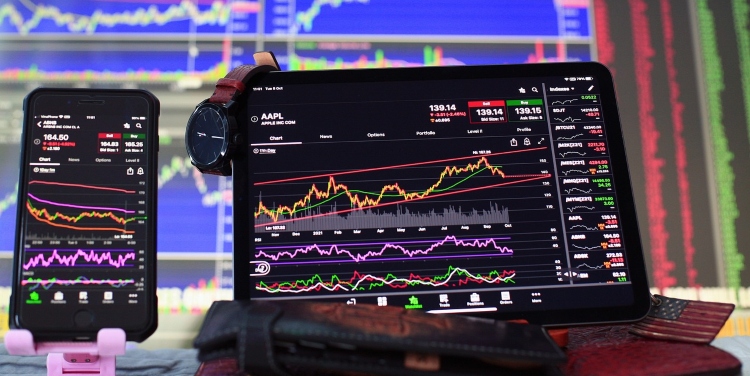Algorithmic trading is a widely popular method investors use to trade financial assets. It involves using computer programs and algorithms to analyze market data and execute trades automatically. This approach has become increasingly prevalent in the financial world because it can quickly process large amounts of data and make decisions without human emotion or bias.
While algorithmic trading may initially seem intimidating, mastering its key concepts can help you develop effective and profitable strategies. Here are five key concepts to master in algorithmic trading.
Understanding Market Dynamics
Understanding market liquidity and volatility is crucial for algorithmic trading, as these factors significantly impact how, when, and at what price a trade can be executed.
Liquidity refers to the ease with which an asset can be bought or sold in the market without affecting its price. Highly liquid markets allow for quicker trades with less price slippage.
Volatility, on the other hand, indicates the degree of variation in an asset’s price over time. Higher volatility means more pricing movement, which can be both a risk and an opportunity. You should also pay attention to price trends and patterns that inform your trading strategies.
Recognizing upward or downward movements can help you capitalize on market momentum.
Incorporating fundamental and technical analysis into your algorithmic trading approach can bolster the effectiveness of your strategy. Fundamental analysis evaluates an asset’s worth based on economic factors, while technical analysis delves into statistical trends revealed by price changes and trading volume.
Combining these approaches gives you a comprehensive market perspective that can refine your trading decisions with greater precision.
Data Analysis and Interpretation
In algorithmic trading, the quality of your data directly influences your strategy’s success. You’ll primarily work with price and volume data, but incorporating alternative data such as news feeds or social media sentiment can provide a competitive edge.
It’s crucial to preprocess and clean your data before applying it to your trading algorithms.
This means filtering out irrelevant information, handling missing values, and ensuring data accuracy. Doing so enhances the reliability of your trading models, allowing for more precise market predictions and informed decision-making.
Remember, in algorithmic trading, your strategies are only as good as the data they’re based on. Refine your data, and your efforts will pay dividends.
Building an Effective Trading Model
Choosing the right algorithmic trading strategy is crucial for success, especially in the dynamic world of crypto market making. Begin by identifying strategies that align with your investment goals and risk tolerance. Whether you lean towards trend following or mean reversion techniques, compatibility with your trading style is the key.
Backtesting your strategy on historical data is a fundamental step. This process allows you to refine and optimize your model, ensuring it performs well under various market conditions. Don’t skimp on this phase. The insights gained here can significantly reduce your risk exposure.
Speaking of risk management, it’s essential to implement solid position-sizing strategies. Your approach should protect your capital from significant losses while capturing profitable opportunities. By balancing your risk effectively, you stand to sustain and grow your portfolio over time.
Execution and Monitoring
Executing your trades effectively is as crucial as developing your strategy. Get familiar with different order types — market, limit, stop orders, and more — to understand how each impacts your entry and exit points. Execution algorithms can also significantly manage slippage and market impact, optimizing timing and price for your trades.
Real-time monitoring is vital in the fast-paced world of trading. Setting up alerts on key indicators or positions allows you to adjust quickly, ensuring you stay aligned with your strategy or pivot when the market demands it.
Performance evaluation is where you learn and refine. Regularly reviewing your trades and strategies enables you to identify what’s working and what’s not. Continuous improvement is the goal, adapting your approach based on thorough analysis and feedback from the market.
Remember, success in trading comes from preparation, execution, and the ability to adapt. Use these tools and strategies to guide your trading decisions and commit to ongoing learning and improvement.
Risk Management Strategies
In algorithmic trading, risk management is not just a component of your strategy; it’s the bedrock that ensures your longevity in the market. Recognize that diversification goes beyond just holding different assets. It involves blending various strategies and asset classes to buffer against market volatility.
You should always set clear stop-loss and take-profit levels to define your exit points before entering a trade. This disciplined approach helps lock in profits and limit losses and makes your trading outcomes more predictable. Well-defined risk management strategies can enhance your overall trading performance and minimize potential risks associated with market fluctuations.
Equally important is incorporating risk-reward ratios into your trading strategies, ensuring that potential gains justify the risks taken. Lastly, be prepared for unexpected market events by implementing safeguards, like setting maximum daily loss limits, to protect your capital. These measures fortify your trading approach against uncertainties, making your trading endeavor more sustainable.
David Prior
David Prior is the editor of Today News, responsible for the overall editorial strategy. He is an NCTJ-qualified journalist with over 20 years’ experience, and is also editor of the award-winning hyperlocal news title Altrincham Today. His LinkedIn profile is here.













































































